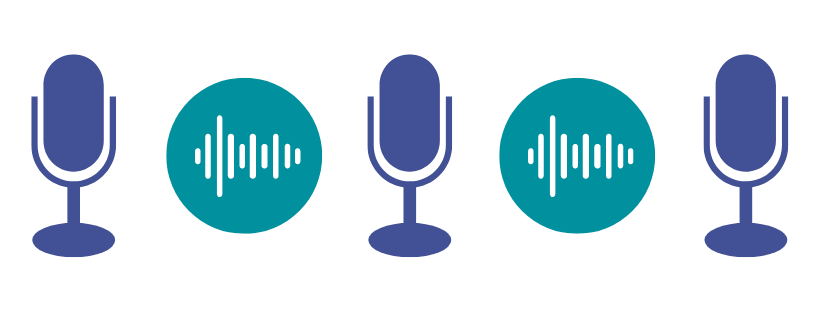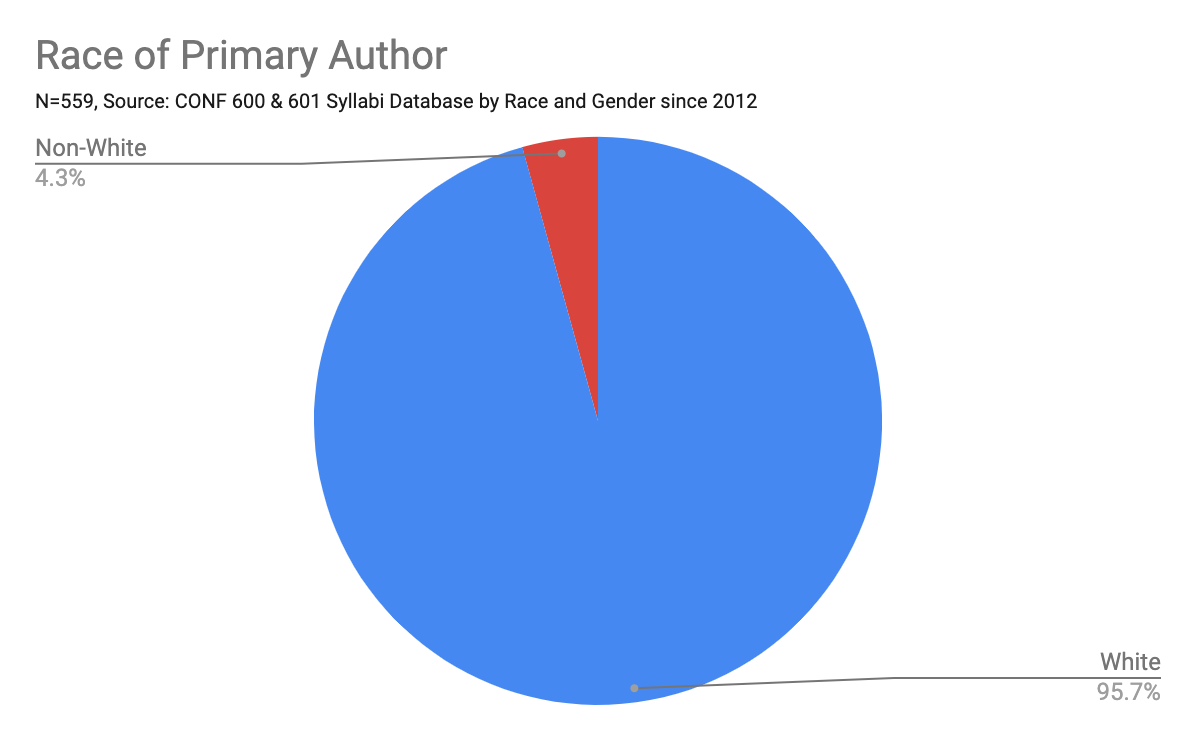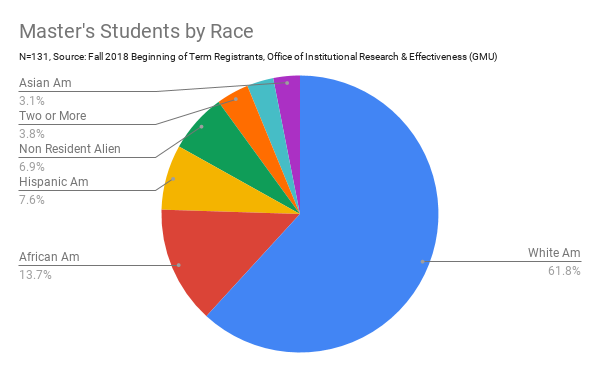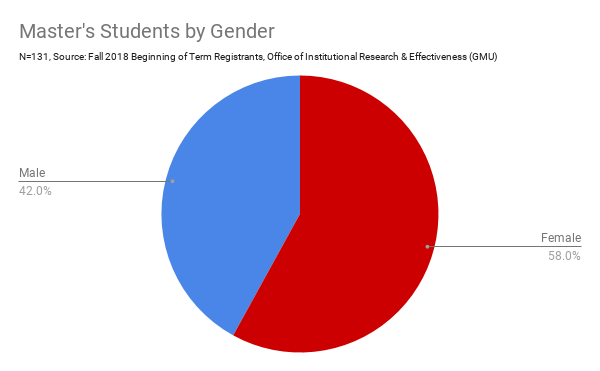In August 2018, eight students gathered in a room in Founders Hall while seven more joined virtually. Despite sound issues, awkward camera angles, and various other technical difficulties, we embarked upon a semester-long journey of exploration of what it means to build inclusive and intentional community—and in particular, how to do so at S-CAR.
This class (a CONF 625 Engaging Conflicts course on “Creating Inclusive Communities”) was the direct result of work led by students the previous semester (in courses led by Professors Susan Allen and Sara Cobb, resulting in the “What the Bleep” project) that highlighted both opportunities and challenges related to issues of diversity at S-CAR.
The students in our class designed and implemented projects that addressed some of these issues. With S-CAR serving as our main case study, they were focused on a community in which they were key stakeholders. Whether as a member of a majority identity group at the school or a historically underrepresented one, as a student living locally or one who has never stepped foot on campus, all are members of our broad and diverse community. Thus, the course readings, conversations, and group projects all offered opportunity for deep and sometimes difficult reflective work on their own personal experiences of privilege, on barriers to access and belonging, and on what inclusivity means to them.
In the below essays, several of the students share some of the insights and results from their group projects, which they also presented to S-CAR’s Diversity Committee earlier this year.
The fact that this was a hybrid class of both online and in-person students brought a number of challenges, from technological hiccups, to virtual miscommunications, to needing to manage group work across varied locations and time zones. Yet ultimately, it deepened our understandings by bringing perspectives and experiences from S-CAR’s growing online community, including from across country borders.
Conversations about issues of diversity, equity, and inclusion are often difficult and uncomfortable in person, let alone when half or more of the participants are online. How do we build trust and enable these conversations virtually as well as in person at S-CAR? How can our classes and curricula speak to the diversity reflected within our community, and how do we build meaningful connections across differences? The students’ essays offer insights for these questions.
One could also ask, why develop a whole class focused on inclusion at S-CAR when there are so many other global issues on which to focus? Understanding how to build inclusive spaces and address issues of diversity and equity are important skills in our field—and one of the most important and often difficult places to do this work is within our own communities. The process of inclusive community-building within our classes and at our school may indeed uncover key insights about the opportunities and the frustrations of that process elsewhere.
Further, in our field, we know that conflict resolution processes are most effective when multiple stakeholders are engaged and the people involved feel valued and their perspectives heard. Likewise, creating an environment in which a diversity of students, faculty, and staff feel a sense of belonging—and that their unique perspectives are valued—will only deepen and enrich our learning in the field.
– Dr. Sheherazade Jafari, designer and instructor of ”Creating Inclusive Communities” and Director of S-CAR’s Point of View International Retreat and Research Center
Podcasts: One way to build inclusive communities
By Tamara Smiley Hamilton (MS student)
Group members: Tamara Smiley Hamilton, Titus Mott, and Sara Siddoway
Creating Inclusive Communities is a course that just might be a game-changer for S-CAR. Designed by Dr. Sheherazade Jafari as an option for students to register for an online course or for a traditional in-person learning experience, the class morphed into both. Students could have two experiences based on their schedules. This flexibility built a community of students who melded together as they created joint agreements for how the community would function through a hybrid model of learning and instruction. Even project assignments integrated online and in-class students into teams.
The Podcast Project Team took up the challenge of using podcasting to build inclusive communities. The result was a series of three interviews as an example that S-CAR might want to pursue.
The team realized that students have different needs and desires for inclusivity. Some want information, some want connection, and some want to feel a part of things even when they are driving or working out in the gym. Podcasts are easy to create at minimum or no cost, and available 24/7 in all time zones. Podcasts can be used to introduce people, projects, ideas, and opportunities. Overall, podcasting is one of several practical ways to build inclusive communities.
The potential for an S-CAR podcast to be used as a great inclusion tool became apparent when a member of the team met a new student from West Africa who arrived after orientation and a day before classes started (a Sunday). The student described feeling lost and disconnected (until she found Charisse!*). Her experience drove home how transformative it would be to have a few welcoming podcasts specifically targeting students from other countries.
S-CAR should seriously consider using podcasts to build inclusive communities and to create a welcoming environment where students, regardless of their work lives and lifestyles, can feel connected and engaged.
Listen to the S-CAR Diversity and Inclusion podcast, featuring episodes with Pushpa Iyer (PhD ’07), Tamara Hamilton (MS student), and Justin (J.J.) Fogata (MS student).
.............................................................................................
Editor’s Note
*Charisse Cardenas is S-CAR’s graduate academic advisor.
Examining S-CAR’s curriculum with a diversity & inclusivity lens
By Chelsie Kuhn (MS ’19)
Group members: Chelsie Kuhn, J.J. Fogata, and Jim Snow
With two of our group members having experience in education, we know that curriculum design and content is important for creating spaces of learning and community. Even more, we know that who is represented in academic work can impact students’ perceptions of themselves and their sense of belonging—we both had experiences of this ourselves as students at S-CAR and had watched our fellow students process the same questions in our interactions.
For our small group project, we wanted to look at who is descriptively represented when we’re looking at theorists of the conflict analysis and resolution field. In order to test this question, we gathered 13 syllabi from the CONF 600 and CONF 601 courses ranging from 2012–2018. We took the authors and assigned readings and inputted them into an Excel file, where we also coded for gender and race. After coding each of the 559 cases, we ran a basic frequency test to see who showed up. We found that of those authors assigned, only 26.8% of them were women, and only 4.7% of them were non-White.*
While these dichotomous variables are problematic in a way (e.g., non-inclusive of non-binary or trans individuals, non-recognizing of nuanced racial identity, assuming label based on coder’s perceptions, etc.), they do help us see a trend that we ought to pay attention to and begin to reckon with: if we want S-CAR to be a diverse place, how will we be inclusive of people who don’t look like the traditional academic cannon?
We know that academia has its history of being an institutionally racist and sexist place, but what will we do with that now? In a more student-centric way, how will we mentor students across lines of identity? This is especially important given the make-up of students in our programs as we become a more diverse school, as evidenced in the graphs below.**
What will we say about the founding of the field that acknowledges this history for what it is? And how do we move forward from here, knowing that academia still privileges people and knowledge-production from certain identities?
This project and the course have left us with more questions than answers. We hope to share a master dataset (de-identified by faculty member) and a codebook with the S-CAR Diversity Committee and community for folks to examine and critique our work. We recommend that our community continue this line of questioning, and that they consider diversifying who they are citing when thinking about what this field can be.
.............................................................................................
Author's Note
*Percentages here represent whether any of the authors of an assigned reading were women or non-White, meaning that if the second co-author was a woman, or was identified as Black, Latinx, Asian, etc., then that reading would be included in those percentages.
**The racial breakdown of students here is labelled as the university reports them to IPEDS for federal funding and other requirements.
Building inclusive community in physical and virtual spaces
By Twayne Hickman (PhD candidate)
Group Members: Sonja Andrews, Twayne Hickman, and Paula Wilson
During the Spring 2018 semester, students participating in an S-CAR event centered on diversity identified challenges within the S-CAR community, including “lack of community and transparency” and a “lack of relationship within cohorts.”
As a group of students in the Fall 2018 Creating Inclusive Communities course, we wondered whether these perceptions resulted, in part, from the absence of virtual and physical spaces for students, alumni, faculty, and staff to routinely meet, congregate, converse, and connect with one another. We hypothesized that an absence of physical and virtual space is indeed a barrier to forming the close interpersonal relationships upon which we believe truly inclusive community is built.
For our group project, we endeavored to create and occupy both virtual and physical spaces where interested students, alumni, faculty, and staff would feel welcomed, included, and encouraged to connect with one another. We began by surveying members of the S-CAR community to determine their interest and availability for both physical and virtual connection. We used data from the survey to design and host several in-person community events, including a game night, a ‘fur therapy’ stress relief event, a potluck, and a write-in.
Simultaneously, we used the survey data to identify community aspirations for virtual connectedness and designed and built a virtual space that we believed responded to needs and challenges identified by community members. Our goal was to create multiple opportunities for students, alumni, faculty and staff to meet virtually and physically to lay the groundwork for meaningful conversations and relationships.
The findings from our project reinforced our belief that “the creation of space that allows individuals to fully engage” is a necessary but not sufficient condition for the creation of inclusive community. We continue to believe there is tremendous opportunity in the continued cultivation of both virtual and physical spaces that already exist in S-CAR, and we recommend the following toward that end:
- Future actions oriented toward “the creation of space that allow individuals to fully engage” should continue to include both physical and virtual space simultaneously and in harmony.
- Currently, there are relatively few S-CAR community events that capitalize on S-CAR’s physical space, and many virtual platforms through which community information flows. We recommend reversing this position and moving toward having many and different physical events and only a single virtual platform.
- The “creation of space that allow individuals to fully engage” is most likely to be realized through students, faculty, alumni, and staff working together. What follows are some tentative ideas on how this harmony might be accomplished:
- A lead from the S-CAR staff should be designated as a single point of contact for S-CAR event-related planning.*
- Representatives from alumni, faculty, and staff should be designated as ‘community liaisons’ and should be included in the planning, execution, and assessment of future virtual and physical events.
- We also recommend leveraging the ten S-CAR Programs and the four S-CAR Centers to meet the community’s desire for more events and activities centered on knowledge-sharing and practice.
.............................................................................................
Editor’s Note
*In Spring 2019, S-CAR hired a dedicated events staff member and began implementing a more streamlined events planning process.
Results of a phenomenological study on fostering inclusion at S-CAR
By Diane Farineau (MS ’19, MOL)
Group members: Diane Farineau, Emma Lee Schmelzer, Korkut Aykut, Kathryn Hupp, Kathryn Hoziol, and Dmitry Novak
Dr. Sheherazade Jafari taught her Fall 2018 Engaging Conflicts (CONF 625) course as a blended synchronous learning (BSL) course, wherein she taught students in the classroom (on campus, or OC) at S-CAR on Wednesday evenings and included—via Blackboard’s Collaborate Ultra—Mason Online Students (MOL) who were scattered around the world at the same time. Using this technology, she was able to instruct and lead discussion with that blended group in real time on a weekly basis. My understanding is this is a first at S-CAR.
To fulfill the group project for the course, our group conducted a reflective phenomenological study of the course’s participants. While a full review of the data was generated for the class, I wanted to specifically call out comments from those students that spoke to the S-CAR Diversity Committee’s charge to “foster and support a community that promotes the equitable representation and treatment of all members of the S-CAR community.”
For the S-CAR community’s consideration, I posit that the mechanism of BSL allows the OC and MOL cohorts to learn together, which, our survey suggests, increases both diversity (in exposing one group to the other in a meaningful way) as well as feelings of inclusion. Examples of feedback from our survey included the following:
- “The course highlighted the diversity of SCAR learners (geography, backgrounds, professional experience.)”
- “Made me think about inclusivity in a different way (online vs in-person and how limiting in-person only courses are)”
- “This has been a really interesting meditation on the differences between MOL and Campus students as they relate to SCAR community … not just in general but for this field. This field has a moral obligation to teach w/in a community. Community is part of our work and we can’t learn to do the work without being part of that community.”
- “Collapsing distance is an incredible change (one student in another state, one in Europe) collapsing time (one student in Europe and the time difference was non-trivial) … I think this has to be part of S-CAR’s (and GMU’s) forward thinking.”
- “Seeing particular student’s experience from around the world in real time and being able to ask them questions and have conversations with them has been really enlightening in ways that wouldn’t be possible without this.”
- “The kinds of problems that we are trying to solve are historically intractable and are going to require a different way of thinking, a different way of communicating, and a different way of doing the work that is going to need to be based on some of the older systems and also there is a lot of room for us to do some really interesting stuff.”
In full transparency, as it was experimental, this course had its challenges, mostly based on technological limitations and the need to accommodate flexibility in design and execution as the semester unfolded. There is a wealth of literature supporting the benefits of BSL and pointing out the need to embrace the iterative process required to support its institution. One study cited in our group’s final report even suggests that it is possible for blended classes to “produce a stronger sense of community among students than either traditional or fully online courses” (Rovai & Jordan, 2004, p. 1).
As course participants, it was several of our strong recommendations that S-CAR continue to investigate this novel teaching method with Dr. Jafari and to consider embracing it as a mechanism for increased diversity and inclusion at S-CAR. This will require curricular, technological, and administrative support in order to come to fruition.
.............................................................................................
Works Cited
Rovai, A and Jordan, H. (2004). Blended learning and sense of community: A comparative analysis with traditional and fully online graduate courses. International Review of Research in Open and Distance Learning, 5(2), 1–13.
Editor’s Note
A version of this piece was presented to the S-CAR Diversity Committee following completion of the research it describes.
Beloved S-CAR Community[1],
You may not know it yet,
but you carry inside your personal store
all the ingredients necessary to bake
a Diversity and Inclusion pie:
your stories,
your vulnerability,
your tenacity.
We have some difficult conversations ahead, and
we need to do a better job about creating braver spaces.
I can promise you that it won’t be fuzzy.
It will be uncomfortable.
Like weaving a moldy, anxious, weeping fabric
into a picnic blanket large enough for all us.
We will continually trip over our tongues, our fears:
You must be careful what you say because it may impact your grade.
Disagreement with other students or guest speakers would be received negatively.
Who is taking a screenshot of this?
We’re not separate from all the other identities we inhabit
when we come into the classroom.
I don’t want to think that we cannot have crucial and critical conversations
in a blended learning environment,
but part of me really thinks that there are certain things
that just cannot be fully discussed.
I want to be able to make mistakes and have candid discussions.
I don’t know how to do that
with Avatars on a screen.
When people share of themselves,
show vulnerability, and take courage to talk about something,
they are then making it easier,
almost giving permission for others to do the same.
You have to really commit to working in this way.
I really feel like this has to be a special experience.
It’s not for everybody.
Collapsing distance is an incredible challenge, collapsing time...
How do our identities show up in classroom experiences online?
What does implicit bias look like?
Slowly, slowly, we will think of each other differently,
which isn’t what education is supposedly all about.
But the work we’re doing here demands that we have more community.
Community is part of our work.
Forced to look at how exclusive I can be,
I have become more forgiving of both myself
and other people for their ways of being in the world.
I imagine a future with everybody around the virtual table, talking,
where we create trust needed for the space for forgiveness.
In fact, my dream is a reality show:
everyone meets in person at the end.
.............................................................................................
Author's Note
[1] ‘beloved community’ was coined by Josiah Royce and introduced to this class through the work of bell hooks
italicized text comes directly from interviews conducted with the class
Editor’s Note
The above poem was written by Emma Lee Schmelzer (MS ’19), compiled from the interviews that her group conducted with members of the Creating Inclusive Communities course.
Graphics and editing for this piece were contributed by Audrey Williams, Storyteller / News Editor.








